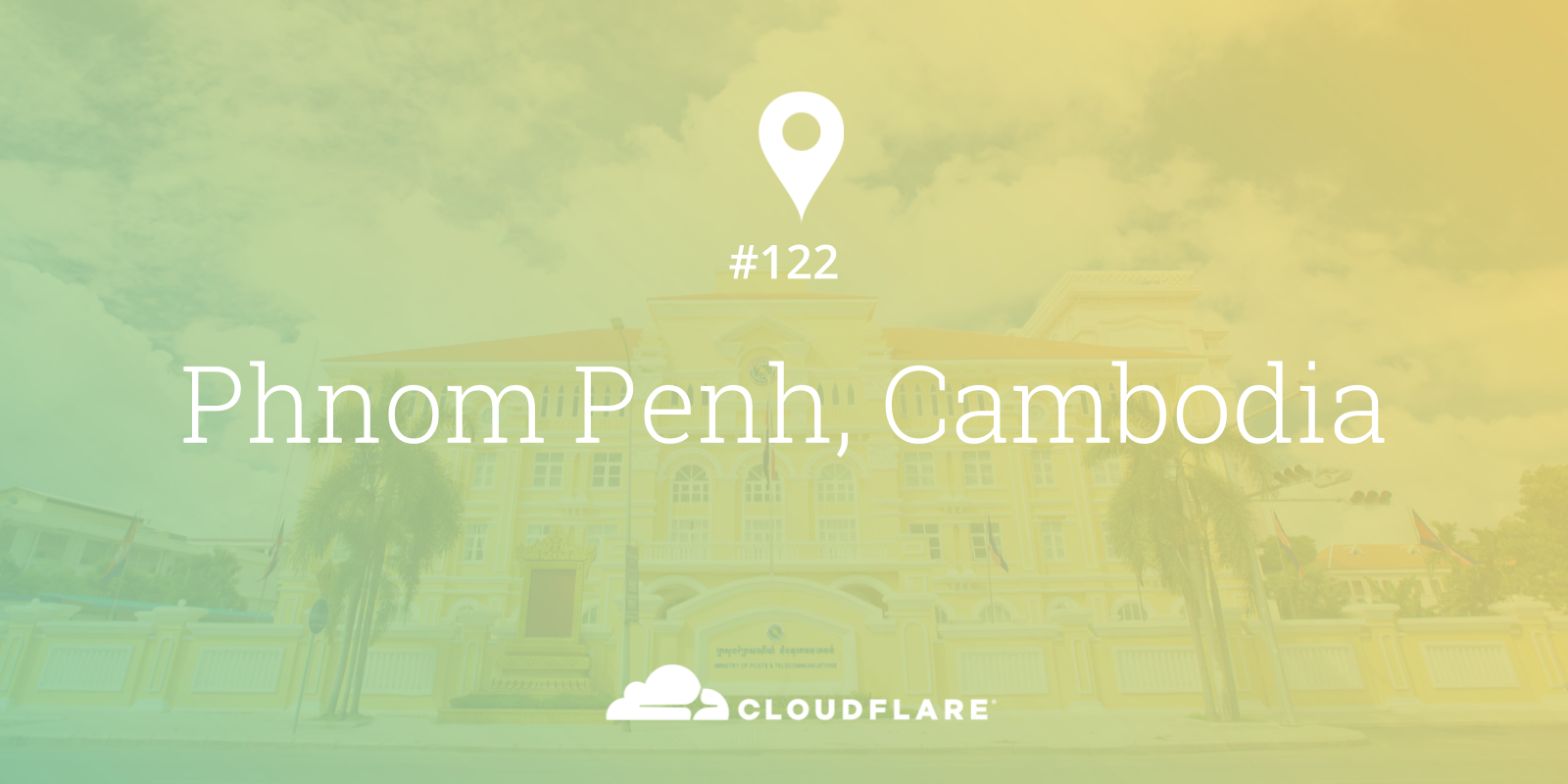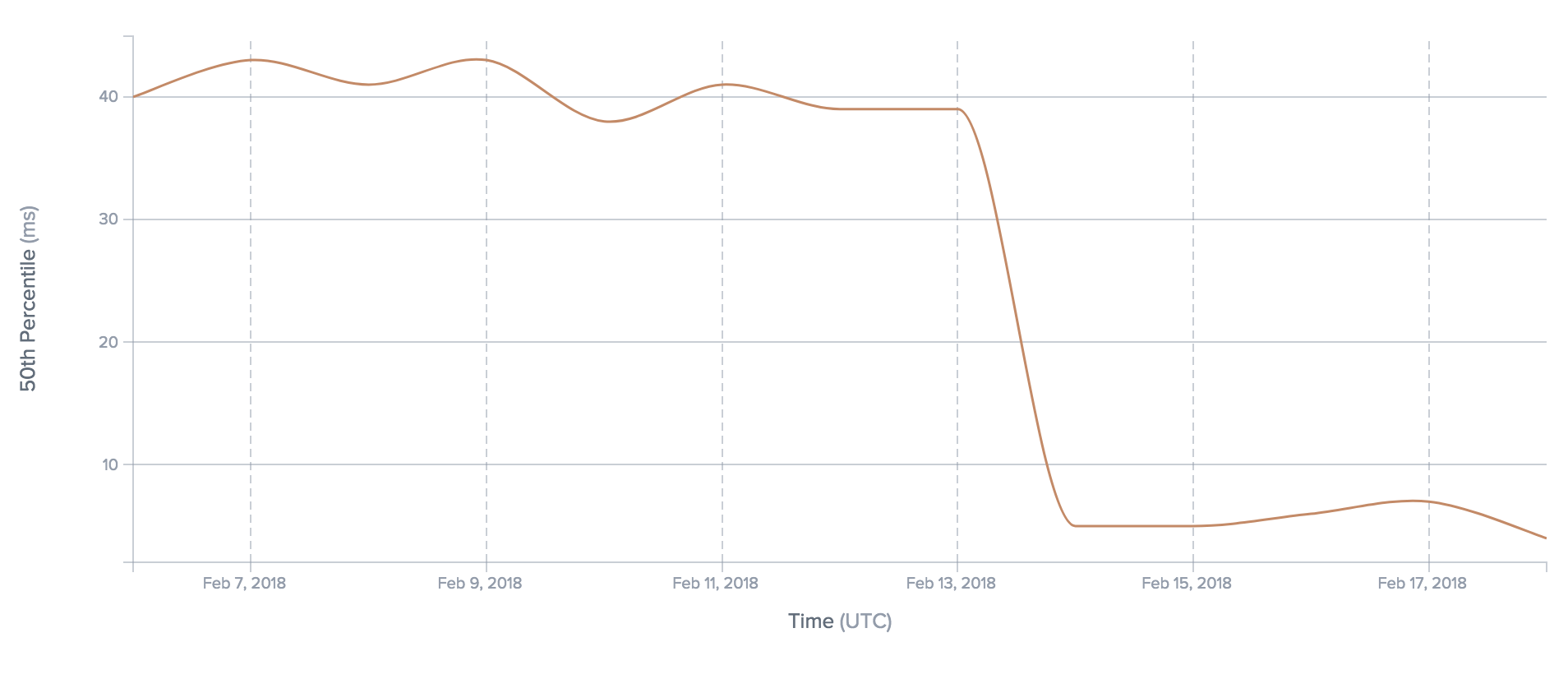Cisco Cybersecurity Report: Bad Guys Winning at Weaponizing Encryption
 More than half of all attacks resulted in financial damages of more than $500,000.
More than half of all attacks resulted in financial damages of more than $500,000.
Taking IT Automation to the Next Level
Process and tool simplification will help IT teams become more integrated into everyday business.
How Useful Is Microsegmentation?
Got an interesting microsegmentation-focused email from one of my readers. He started with:
Since every SDDC vendor is bragging about need for microsegmentation in order to protect East West traffic and how their specific products are better compared to competition, I’d like to ask your opinion on a few quick questions.
First one: does it even make sense?
Read more ...ជំរាបសួរ! – Phnom Penh: Cloudflare’s 122nd Data Center


Cloudflare is excited to turn up our newest data center in Phnom Penh, Cambodia, making over 7 million Internet properties even faster. This is our 122nd data center globally, and our 41st data center in Asia. By the end of 2018, we expect that 95% of the world's population will live in a country with a Cloudflare data center, as we grow our global network to span 200 cities.
Cambodian Internet
Home to over 16 million people, Cambodia has a relatively low base of Internet penetration (~25%) today, but is seeing an increasing number of Internet users coming online. For perspective, Cambodia has approximately the same number of Internet users as Lebanon (where we just turned up our 121st data center!) or Singapore (from where we used to serve a portion of Cambodian visitors).
In the coming weeks, we’ll further optimize our routing for Cloudflare customers and expect to see a growing number of ISPs pick up our customers’ traffic on a low latency path.

Latency from a Cambodian ISP (SINET) to Cloudflare customers decreases 10x
Coming up next
Next up, in fact, thousands of feet further up, we head to the mountains for Cloudflare’s 123rd data center. Following Continue reading
AT&T Fights Back: 5G Footprint Will be Nationwide, Not Just Hot Spots
 Atlanta, Dallas, and Waco, Texas, will be among the operator’s first 5G markets.
Atlanta, Dallas, and Waco, Texas, will be among the operator’s first 5G markets.
The Anatomy of a Cisco Spark Bot
I spent a long time creating my first Spark bot, Zpark. The first commit was in August and the first release was posted in January. So, six months elapsed time. It's also over-engineered. I mean, all it does is post messages back and forth between a back-end system and some Spark spaces and I ended up with something so complex that I had to draw a damn block diagram in the user guide to give people a fighting chance at comprehending how it works.
Its internals could've been much simpler. But that was part of the point of creating the bot: examining the proper architecture for a scalable application, learning about new technologies for building my own API, learning about message brokers, pulling my hair out over git's eccentricities and ultimately, having enough material to write this blog post.
In this post I'm going to break down the different functional components of Zpark, discuss what each does, and why-or not-that component is necessary. If I can achieve one goal, it will be to retire to a tropical island ASAP. If I can achieve a second goal, it will be to give aspiring bot creaters (like yourself, presumably) a strong Continue reading
NSX-T: Multi-Tiered Routing Architecture
Multi-tenancy exists in some shape or form in almost every network. For an Enterprise network, it can be the separation of tenants based on different business units, departments, different security/network policies or compliance requirements. For a service provider, multi-tenancy can simply be separation of different customers (tenants).
Multi-tenancy doesn’t just allow separation of tenants, but also provides control boundaries as to who controls what. For instance, tenant administrators can control/configure the network and security policies for their specific tenants and a service provider administrator can either provide a shared service or provide inter-tenant or WAN connectivity.
In the logical routing world of NSX-T, this provider function can provide connectivity between the tenant logical networks and physical infrastructure. It can also provide inter-tenant communication or some shared services (like NAT, Load Balancer etc.) to the tenants.
In my previous post, NSX-T: Routing where you need it (Part 1), I discussed how NSX-T provides optimized E-W distributed routing and N-S centralized routing. In addition to that, NSX-T supports a multi-tiered routing model with logical separation between provider router functions and tenant routing functions. The concept of multi-tenancy is built into the routing model. The top-tier logical router is referred to Continue reading
The Linux Foundation Opens to the Edge with Akraino Project
 AT&T contributed seed code to the open source project.
AT&T contributed seed code to the open source project.
VxLan – Short Story Lab
Hi,
Note: Its perfectly possible to do VXLAN/EVPN on VQFX and VMX, all you have to do is to setup a good lab over ESXI or if you want you can do it over Eve-ng emulator. I personally did it via ESXI.
Am not covering the petty BGP configuration of Full-Mesh and Evpn-BGP configuration, its very simple, this post mainly Aims at show-casing the quick and short way of setting up EVPN/VXLAN in Vqfx and over vMX
On the way to some DC Lab Practise, I wanted to quickly show you guys how to lab up Vxlan on Vqfx and Vmx.
Intention – I was reading on VxLan and as most of my learning comes around seeing things first and understanding the later, I felt uncomfortable too soon reading at the Documentation, I wanted to learn it by doing.
Here is the topology
Goal – Build Vxlan / Evpn with a very small set-up to under the workings.
First things first
-> In order to build any VxLan, you need to have some underlay and some overlay. Our underlay is BGP (It can be anything you see, as long as it can exchange Loopback Space and establish IP Continue reading
NDSS 2018: Automating the Process of Vulnerability Discovery
NDSS 2018 is in full swing in San Diego this week and a couple of papers that really grabbed my attention were both in the same session on Network Security and Cellular Networks yesterday.
Samuel Jero, a PhD student at Purdue University and past IRTF Applied Networking Research Prize Winner, presented a fascinating paper on “Automated Attack Discovery in TCP Congestion Control Using a Model-guided Approach”. Of the many protocols and algorithms that are in daily use on the Internet, some are more fundamental and important than others and it doesn’t get much more fundamental and important than TCP congestion control.
TCP congestion control is what makes it possible for millions of autonomous devices and networks to seamlessly, and more-or-less fairly, share available bandwidth. Without it the network would literally collapse.
Attacks against congestion control to manipulate senders’ or receivers’ understanding of the state of the network have been known for some time. Jero and his co-authors Endadul Hoque, David Choffnes, Alan Mislove and Cristina Nita-Rotaru developed an approach using model-based testing to address the scalability challenges of previous work to automate the discovery of manipulation attacks against congestion control algorithms.
By building abstract models of several congestion Continue reading
Using Go as a scripting language in Linux

At Cloudflare we like Go. We use it in many in-house software projects as well as parts of bigger pipeline systems. But can we take Go to the next level and use it as a scripting language for our favourite operating system, Linux?

gopher image CC BY 3.0 Renee French
Tux image CC0 BY OpenClipart-Vectors
Why consider Go as a scripting language
Short answer: why not? Go is relatively easy to learn, not too verbose and there is a huge ecosystem of libraries which can be reused to avoid writing all the code from scratch. Some other potential advantages it might bring:
- Go-based build system for your Go project:
go buildcommand is mostly suitable for small, self-contained projects. More complex projects usually adopt some build system/set of scripts. Why not have these scripts written in Go then as well? - Easy non-privileged package management out of the box: if you want to use a third-party library in your script, you can simply
go getit. And because the code will be installed in yourGOPATH, getting a third-party library does not require administrative privileges on the system (unlike some other scripting languages). This is especially useful in large Continue reading
Automation: Easy Button vs Sentient Voodoo Magic Button
Automation has become this “all-encompassing thingy” much like SDN. It’s a software industry problem and it’s critical more now than ever that we do not slip backwards by trying to drag a broken idea forwards.
This post contains nothing new and should act as polish on common sense. If you’re on the look-out for removing pain and getting stuff done with the power of automation, read on.
If your processes and operating handbook for your team or organisation is in disarray, it will not come too much as a surprise when your automation team implements something inherently broken. Naturally the technology, shortly followed by the team will take a boat load of blame. Whilst artificial intelligence and machine learning is promising, unless you have a team of subject matter experts or have very deep pockets, automation today is simple and the patterns are hard wired. Even decision making logic has been should be pre-thought. Automation platforms do not today think creatively and do not possess sentient capabilities. If they did, I would be on a beach right now drinking mojitos, smoking cigars and wondering what to do with my time on this rock (the answer by the way would be Continue reading
Get the Facts on 5G, IoT, and the Network Edge at MWC 2018
 GSMA expects attendance at the annual show to surpass 108K.
GSMA expects attendance at the annual show to surpass 108K.
AT&T Revs Up MEC AR, VR Focus at Palo Alto Test Zone
 The test will look to cure choppy and blurry AR and VR services.
The test will look to cure choppy and blurry AR and VR services.
